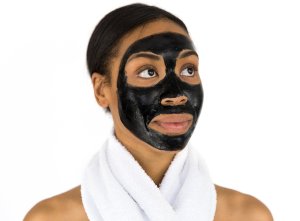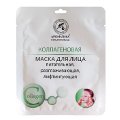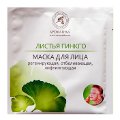 The skin on different areas of your face may have different needs, and it is obvious that it is not always advisable to apply the same face mask to your entire face. For example, the T-zone usually needs deep cleansing and mattifying masks because it produces more oil, while the cheeks need nourishing and hydrating masks. Multimasking is just what you need in such a situation. Let’s figure out what multimasking is and how it works.
The skin on different areas of your face may have different needs, and it is obvious that it is not always advisable to apply the same face mask to your entire face. For example, the T-zone usually needs deep cleansing and mattifying masks because it produces more oil, while the cheeks need nourishing and hydrating masks. Multimasking is just what you need in such a situation. Let’s figure out what multimasking is and how it works.
Multimasking is just what it says on the tin; the term refers to applying multiple face masks at the same time, addressing the needs of different areas of your face. Today, multimasking is one of the most popular beauty trends. It is believed to have originated in Asia, where women pay special attention to skincare and are not averse to using several products simultaneously if it may help them look even more attractive.
Gradually, the practice of multimasking has acquired many fans around the world. It should be noted that this is more than just a marketing trick to make people buy more beauty products; different areas of your face do have their own needs, especially if you have combination skin, and it is better to use several masks a the same time, applying them to specific areas of your face, than to alternate different kinds of masks, applying them to your entire face.
However, dermatologists warn that multimasking can be bad overly sensitive skin that is prone to allergic reactions, because in such a case, it can be difficult to figure out which of the masks has caused the allergy. This is why before you try multimasking you should test each mask separately on an inconspicuous area of the skin to make sure you aren’t allergic to any of them.
You can use almost all types of face masks for multimasking, except for, probably, sheet masks because they are designed to cover the entire face. The best way to apply masks is to use a foundation brush that allows to evenly distribute each mask over the designated area of the skin. It is best to combine masks that need to be left on the skin for approximately the same amount of time, otherwise they will be difficult to rinse off, or you can simply apply them one after another, starting with the mask that needs to sit on your face the longest and ending with the mask that needs the shortest amount of time to work.
Before multimasking, you need to divide your face into zones depending on the needs of your skin in different areas. To make this easier for you, you can do a simple test. Wash your face, gently pat it dry, don’t apply any products and wait for 30 to 60 minutes. After that, cover your face with a paper tissue, gently blot your skin, and take a look at the traces of skin oil left on the tissue.
The areas that have left noticeable greasy stains on the tissue have oily skin. This is most likely the so-called T-zone, i.e. the skin of your forehead and nose. The areas where greasy stains are barely visible (usually the chin) have normal skin. Finally, if some parts of the tissue have no signs of grease at all, your skin is probably dry in these areas. It is typical for the cheeks and the area around the eyes.
As soon as you’ve figured out the individual “map” of your face, you can try applying different face masks to different zones. Here are a few tips for choosing the best face masks for each area of your face.
T-zone
Cleansing, mattifying and soothing face masks are considered the best choice for the T-zone, since this area is characterised by increased sebum secretion. Common active ingredients found in such masks include cosmetic clay (kaolin, bentonite, fuller’s earth, etc.), zinc, charcoal, tea tree essential oil, and salicylic acid.
Around the Eyes
The skin around the eyes lack sebaceous glands; it is thin, delicate and especially vulnerable to aggressive environmental factors. It is the first area on the face to show visible signs of ageing, such as fine lines, wrinkles, loss of elasticity and firmness. Therefore, masks for the skin around the eyes usually contain hydrating and anti-age ingredients, such as retinol, cucumber extract, hyaluronic acid, caffeine, gotu kola, etc. They improve lymph drainage, slow down the ageing process, make the skin firmer, boost its elasticity, and reduce dark circles under the eyes.
Cheeks and Cheekbones
The skin in this zone is usually normal or dry. Therefore, it primarily needs moisturising and nourishing masks that are rich in natural vegetable oils, vitamin A, C and E, moisturising agents, and antioxidants.
Chin
If the skin of your chin is oily, like the T-zone, it needs cleansing, anti-inflammatory and soothing masks that help to regulate sebum secretion and prevent blackheads and pimples. If the skin of your chin is normal, it will benefits from masks that have cleansing and moisturising properties.
Neck
Although anatomically the neck isn’t part of your face, it should never be forgotten during multimasking. The skin here most of all needs proper nourishment and hydration, as well as lifting. This means that masks for the neck usually contain ingredients such as hyaluronic acid, natural carrier oils (for example, grapeseed oil), panthenol, algae extracts, vitamin E, collagen, etc.
The order of applying different masks is usually the following: first the area around the eyes, then the T-zone, the cheeks and cheekbones, and, finally, the chin and the neck. You should let the masks sit for 10 to 15 minutes, rinse them off with warm water, and then splash your face with lukewarm or cool water. Don’t use more than 3 masks at the same time and don’t repeat the procedure more than once or twice a week.
Face Masks in Our Store
Aromatika Collagen Face Mask, 35 g |
Aromatika Ginkgo Leaf Face Mask, 35 g |
